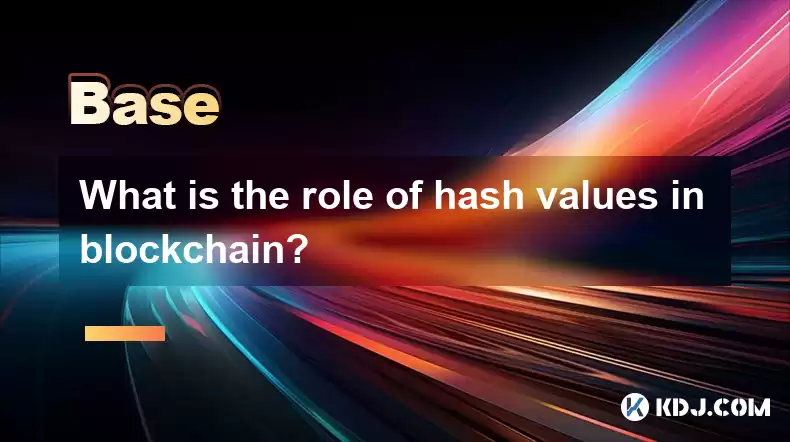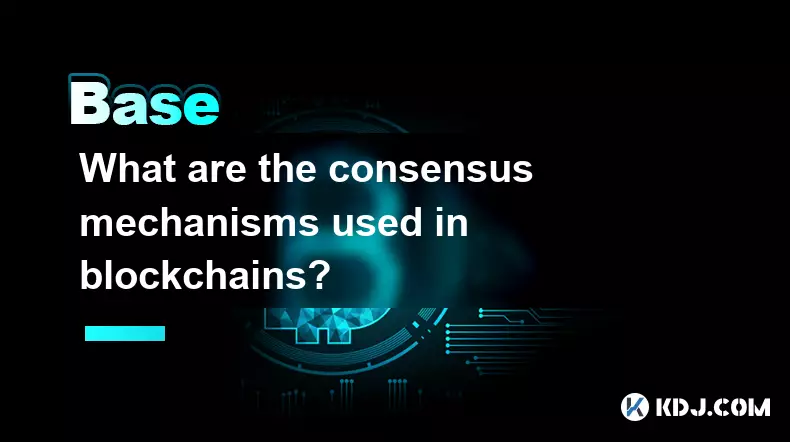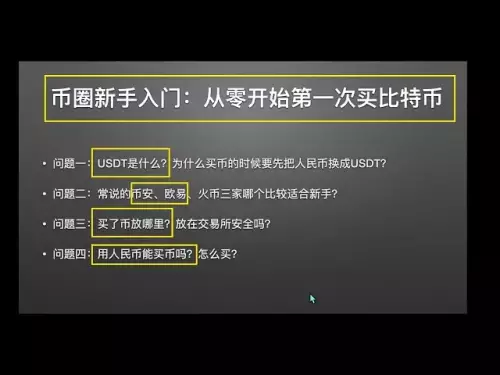-
 bitcoin
bitcoin $113137.862908 USD
0.65% -
 ethereum
ethereum $4107.436072 USD
-1.96% -
 xrp
xrp $2.908808 USD
2.59% -
 tether
tether $1.000294 USD
0.01% -
 bnb
bnb $1010.914842 USD
-1.12% -
 solana
solana $210.653310 USD
-2.16% -
 usd-coin
usd-coin $0.999776 USD
-0.01% -
 dogecoin
dogecoin $0.239360 USD
-0.04% -
 tron
tron $0.337849 USD
0.37% -
 cardano
cardano $0.807698 USD
-0.61% -
 hyperliquid
hyperliquid $45.387447 USD
0.61% -
 chainlink
chainlink $21.408287 USD
-0.92% -
 ethena-usde
ethena-usde $1.000509 USD
-0.04% -
 avalanche
avalanche $32.634682 USD
-4.77% -
 sui
sui $3.349772 USD
-0.19%
What is the role of hash values in blockchain?
Blockchain's security relies on cryptographic hash functions; each block's hash links to the previous, creating a tamper-evident chain. Altering data necessitates recalculating subsequent hashes, making manipulation computationally infeasible.
Mar 04, 2025 at 01:19 pm

What is the role of hash values in blockchain?
Key Points:- Hash functions are cryptographic one-way functions that take an input of any size and produce a fixed-size output (a hash). This output is crucial for blockchain security and integrity.
- Hash values ensure data integrity by detecting even the slightest alteration in the input data. Any change, no matter how small, results in a completely different hash value.
- Hash values are fundamental to blockchain's linking of blocks, forming the chain. Each block's hash is linked to the previous block's hash, creating a chronological and tamper-evident record.
- Hash values contribute to the immutability of the blockchain. Altering a single block would require recalculating all subsequent hashes, making manipulation computationally infeasible.
- Different blockchain platforms utilize various hash algorithms, each with its own strengths and weaknesses in terms of security and computational efficiency.
The Role of Hash Values in Blockchain: A Detailed Exploration
The foundation of blockchain technology rests upon a seemingly simple yet incredibly powerful cryptographic concept: the hash function. Understanding the role of hash values is crucial to grasping the fundamental security and integrity of blockchain networks. Let's delve into the multifaceted role these functions play.
- 1. Data Integrity Verification: A hash function is a cryptographic algorithm that takes an input (data of any size) and produces a fixed-size string of characters, known as the hash value or hash digest. The key characteristic of a good cryptographic hash function is its one-way nature; it's computationally infeasible to reverse-engineer the input data from its hash value. This one-way property is crucial for ensuring data integrity. If even a single bit of the input data is changed, the resulting hash value will be drastically different. This allows for easy verification of data integrity. A blockchain node receiving a block can compute the hash of the block's contents and compare it to the hash included in the block header. A mismatch indicates data corruption or tampering, triggering rejection of the block. This constant verification ensures that the information stored on the blockchain remains unaltered. This mechanism extends beyond just the data within a single block; it also underpins the linking of blocks together, as we'll see below. The security of this verification process relies heavily on the cryptographic properties of the chosen hash function. A weak hash function could be vulnerable to collisions (different inputs producing the same hash), undermining the integrity check. Therefore, the selection of robust and well-vetted hash algorithms is paramount for the security of any blockchain network. The strength of the hash function directly impacts the difficulty of manipulating the blockchain data, making it a cornerstone of blockchain's security model. The computational cost associated with finding collisions or pre-image attacks (finding an input that produces a specific hash) must be astronomically high to guarantee the system's robustness. This reliance on computational infeasibility is a central aspect of blockchain security, protecting against malicious actors attempting to tamper with the blockchain's data.
- 2. Linking Blocks in the Chain: The "chain" in blockchain is formed by linking blocks together using hash values. Each block contains a header that includes, among other things, the hash of the previous block. This creates a chronological chain of blocks, where each block's validity depends on the validity of its predecessor. This linkage is the essence of the blockchain's structure. A new block is added to the chain by calculating its hash and including the hash of the previous block in its header. This creates an unbroken chain of hashes, linking all blocks together. Any attempt to alter a block's data would necessitate recalculating not only that block's hash but also the hashes of all subsequent blocks, making such an alteration extremely difficult and computationally expensive. The sheer number of blocks and the complexity of the hash function make altering the chain practically impossible in a large, decentralized network. The difficulty of this task scales exponentially with the length of the blockchain, rendering any attempt at large-scale manipulation virtually impossible within a reasonable timeframe. This linking mechanism ensures that the entire blockchain's history is immutable and tamper-evident. The cryptographic linking of blocks using hash values guarantees the integrity of the entire chain, forming the basis of the blockchain's trust and security model. This chain of linked blocks, each secured by its hash and linked to the previous block’s hash, creates a highly secure and auditable ledger.
- 3. Proof-of-Work and Mining: In many blockchain systems, particularly those using a Proof-of-Work (PoW) consensus mechanism, hash functions play a critical role in the mining process. Miners compete to solve complex cryptographic puzzles, which often involve finding a hash value that meets specific criteria (e.g., starting with a certain number of zeros). The difficulty of this process is adjusted dynamically to maintain a consistent block generation rate. The computational intensity of this process ensures the security and integrity of the network, preventing malicious actors from easily controlling the blockchain. The hash function acts as the core mechanism for this computational challenge. The complexity of the hash function determines the difficulty of the puzzle, directly impacting the energy consumption and computational resources required for mining. The chosen hash algorithm significantly influences the overall security and efficiency of the PoW system. Different algorithms offer varying levels of resistance to attacks like ASIC-based mining, which can centralize mining power and potentially compromise the network's decentralization. The selection of the hash algorithm is thus a crucial design decision in a PoW blockchain.
- 4. Ensuring Immutability: The immutability of the blockchain is a direct consequence of the properties of hash functions. As previously mentioned, changing any part of a block requires recalculating its hash and all subsequent block hashes. This would require immense computational power and time, making it practically infeasible in a large, distributed network. The interconnectedness of the blocks through their hash values creates a self-verifying and tamper-evident system. This immutability is a crucial feature that underpins the trust and reliability of blockchain technology. The difficulty of altering a block increases exponentially with the number of subsequent blocks added to the chain. This makes the blockchain extremely resistant to manipulation, providing a high level of assurance that the data stored on the blockchain remains unaltered. The immutability of the blockchain is a critical characteristic for applications requiring a high degree of data integrity and trustworthiness, such as financial transactions, supply chain management, and digital identity verification. This inherent resistance to modification is a defining feature of blockchain technology and is directly attributable to the properties of the hash functions used.
FAQs
Q: What are some common hash algorithms used in blockchain?A: Several hash algorithms are used in different blockchain platforms. Some popular examples include SHA-256 (used in Bitcoin), SHA-3, and Scrypt. Each algorithm has its own strengths and weaknesses regarding security and computational efficiency. The choice of algorithm is a crucial design decision impacting the blockchain's security and performance.
Q: How does a hash function ensure the immutability of a blockchain?A: The immutability stems from the one-way nature of the hash function and the chaining of blocks. Altering a single block necessitates recalculating the hash of that block and every subsequent block, a computationally infeasible task for large blockchains. This makes any tampering readily detectable.
Q: Can hash functions be broken?A: While theoretically, all cryptographic algorithms are breakable, given enough computational power, the strength of a hash function lies in the computational infeasibility of breaking it within a reasonable timeframe. A robust hash function requires an immense amount of computational resources to break, making it practically secure. Advances in computing power and cryptographic analysis constantly challenge the security of existing algorithms, necessitating the ongoing evaluation and potential updates to the hash functions used in blockchain systems.
Q: What happens if a collision occurs in a blockchain's hash function?A: A collision (two different inputs producing the same hash) would severely compromise the security of the blockchain. While well-designed hash functions are extremely resistant to collisions, the occurrence of a collision would allow for malicious manipulation of the blockchain. This is why the selection of strong, well-vetted hash algorithms is of paramount importance.
Q: How does the choice of hash algorithm impact the efficiency of a blockchain?A: Different hash algorithms have different computational complexities. Some algorithms are faster and more efficient than others, impacting the speed of block generation and transaction processing. The choice of hash algorithm involves a trade-off between security and efficiency. A more secure algorithm might be computationally more expensive, leading to slower block generation times.
Disclaimer:info@kdj.com
The information provided is not trading advice. kdj.com does not assume any responsibility for any investments made based on the information provided in this article. Cryptocurrencies are highly volatile and it is highly recommended that you invest with caution after thorough research!
If you believe that the content used on this website infringes your copyright, please contact us immediately (info@kdj.com) and we will delete it promptly.
- Solo Leveling Meme Coin: Producer Backs Web3 Fan Engagement
- 2025-09-25 12:45:11
- Dogecoin ETF Buzz: Will DOGE Soar Again?
- 2025-09-25 12:45:11
- Crypto Casinos in 2025: Bitcoin Gambling, Trusted Platforms, and What You Need to Know
- 2025-09-25 12:25:13
- Upbit, Naver, and the Crypto App Revolution: What's the Buzz?
- 2025-09-25 12:25:13
- Layer2, Perp, and Alt-L1 Showdown: Who Will Win the DeFi Arena?
- 2025-09-25 12:30:01
- SBF's 'gm' Tweet: FTT Token's Wild Ride and Crypto Twitter's Reaction
- 2025-09-25 12:30:01
Related knowledge

Can I recover lost cryptocurrency?
Sep 25,2025 at 08:18am
Understanding the Nature of Cryptocurrency Loss1. Cryptocurrency operates on decentralized networks, meaning there is no central authority to reverse ...

How can I earn passive income from cryptocurrency?
Sep 23,2025 at 10:18am
Staking Cryptocurrencies for Regular Returns1. Many blockchain networks operate on a proof-of-stake (PoS) consensus mechanism, allowing users to earn ...

What are the consensus mechanisms used in blockchains?
Sep 24,2025 at 10:00am
Proof of Work and Its Role in Blockchain Security1. Proof of Work (PoW) is one of the earliest consensus mechanisms, first implemented by Bitcoin. Min...

Is there a finite supply of Bitcoin?
Sep 23,2025 at 06:00am
Bitcoin's Fixed Supply Mechanism1. Bitcoin was designed with a hard cap of 21 million coins, making its supply finite and predictable. This limit is h...

How do decentralized exchanges (DEXs) work?
Sep 23,2025 at 09:54pm
Understanding the Mechanics of Decentralized Exchanges1. Decentralized exchanges operate without a central authority, allowing users to trade cryptocu...

How are cryptocurrency transactions taxed?
Sep 23,2025 at 04:36am
Taxation of Cryptocurrency TransactionsCryptocurrency transactions are subject to various tax regulations depending on jurisdiction, usage, and freque...

Can I recover lost cryptocurrency?
Sep 25,2025 at 08:18am
Understanding the Nature of Cryptocurrency Loss1. Cryptocurrency operates on decentralized networks, meaning there is no central authority to reverse ...

How can I earn passive income from cryptocurrency?
Sep 23,2025 at 10:18am
Staking Cryptocurrencies for Regular Returns1. Many blockchain networks operate on a proof-of-stake (PoS) consensus mechanism, allowing users to earn ...

What are the consensus mechanisms used in blockchains?
Sep 24,2025 at 10:00am
Proof of Work and Its Role in Blockchain Security1. Proof of Work (PoW) is one of the earliest consensus mechanisms, first implemented by Bitcoin. Min...

Is there a finite supply of Bitcoin?
Sep 23,2025 at 06:00am
Bitcoin's Fixed Supply Mechanism1. Bitcoin was designed with a hard cap of 21 million coins, making its supply finite and predictable. This limit is h...

How do decentralized exchanges (DEXs) work?
Sep 23,2025 at 09:54pm
Understanding the Mechanics of Decentralized Exchanges1. Decentralized exchanges operate without a central authority, allowing users to trade cryptocu...

How are cryptocurrency transactions taxed?
Sep 23,2025 at 04:36am
Taxation of Cryptocurrency TransactionsCryptocurrency transactions are subject to various tax regulations depending on jurisdiction, usage, and freque...
See all articles










































































